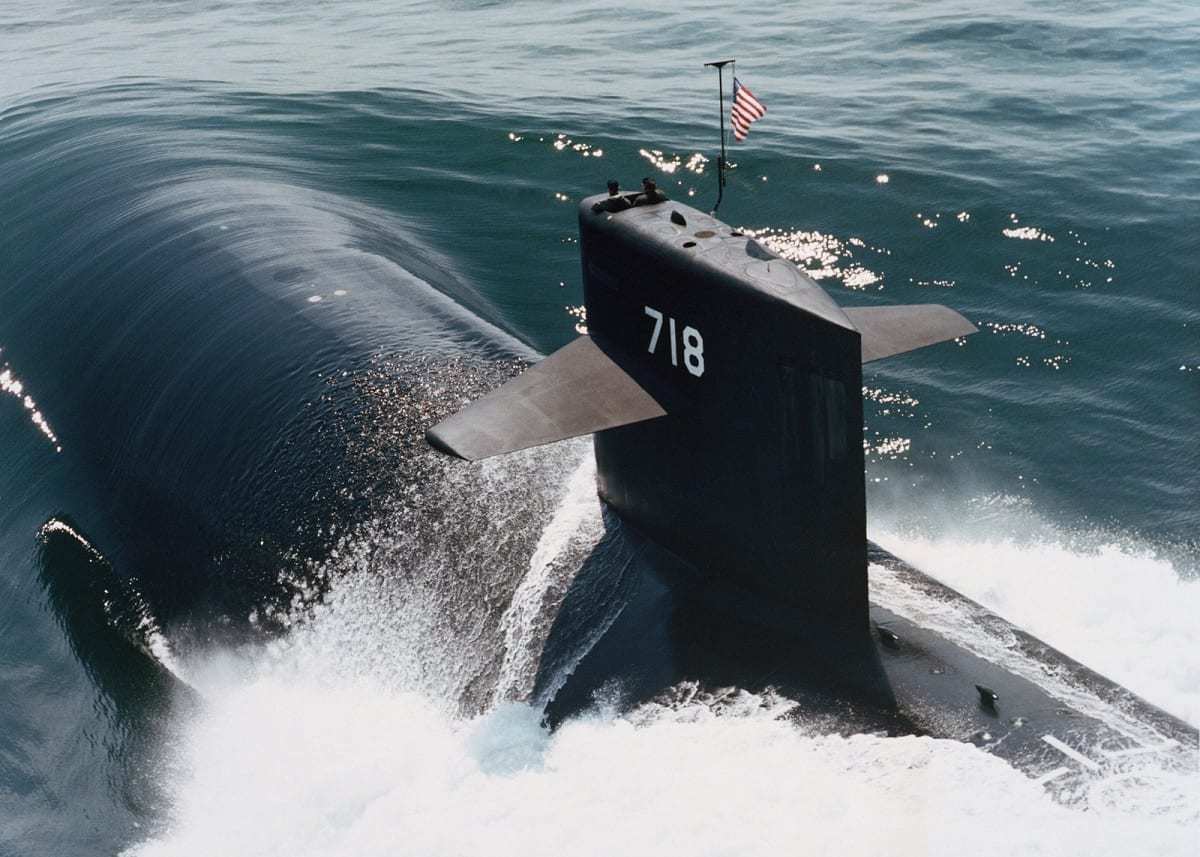The Los Angeles-Class submarines, while old compared to today’s standards, are still the spine of the U.S. Navy‘s undersea fleet. And they had one mission: to beat the then-Soviet Union in a war: Since its introduction in the mid-1970s, the Los Angeles-class has been the mainstay of the United States Navy‘s attack submarine (SSN) fleet. The submarines were developed to escort carrier task groups and were designed to be capable of making high speeds underwater in order to keep up with surface forces.
The boats are among the most advanced undersea vessels of their type in the world. Though anti-submarine warfare (ASW) is still their primary mission, the inherent characteristics of the submarine’s stealth, mobility and endurance can also be used to meet the challenges of today’s changing global geopolitical climate. In addition, the boats have proven capable in a number of secondary roles including intelligence gathering, show-of-force missions, insertion of special forces, strike missions, mining and search and rescue.
Los Angeles-Class Were Big Boats
Each of the vessels is about 362 feet in length, and weighs in at about 1,800 tonnes (2,000 tons) – considerably more than the preceding Sturgeon-class. The submarines are divided into two watertight compartments. The forward compartment houses all the living spaces, weapons systems and control spaces – while the aft compartment contains the bulk of the ship’s engineering systems. The submarines are home to a crew of thirteen officers and 131 sailors.
Each of the submarines was reported to have cost around $900 million in 1990 dollars – equivalent to around $1.7 billion in today’s money.
Unlimited Endurance
The Los Angeles-class submarines are powered by a General Electric S6G nuclear reactor, which delivers pressurized hot water to the steam generator – and that in turn drives the steam turbines. An auxiliary motor also produces 252 kW, and the boats can travel at 25 knots surfaced, and 30 knots submerged.
The range is essentially unlimited, but typically each sub carries enough food to feed the crew for as long as 90 days. In addition, the SSNs are equipped with two distilling plants that can convert seawater to freshwater for drinking, washing, and for use in the propulsion plant.
The vessels also carried a variety of atmospheric control devices, including an Electrolytic Oxygen Generator, which enabled the submarine to remain submerged for extended periods of time without ventilating.
Some of the boats of the class were also developed to deliver U.S. military Special Forces, including U.S. Navy SEALs through either a Dry Deck System (DDS) or the Advanced SEAL Delivery System (ASDS).
The Los Angeles-Class Entered Service in the Disco Era
Developed in the late 1960s, the USS Los Angeles (SSN 668) – the lead boat in the class – was launched in April 1974 and completed in 1976. Total production included sixty-two submarines, making the Los Angeles-class by far the most important in the United States Navy’s submarine force.

